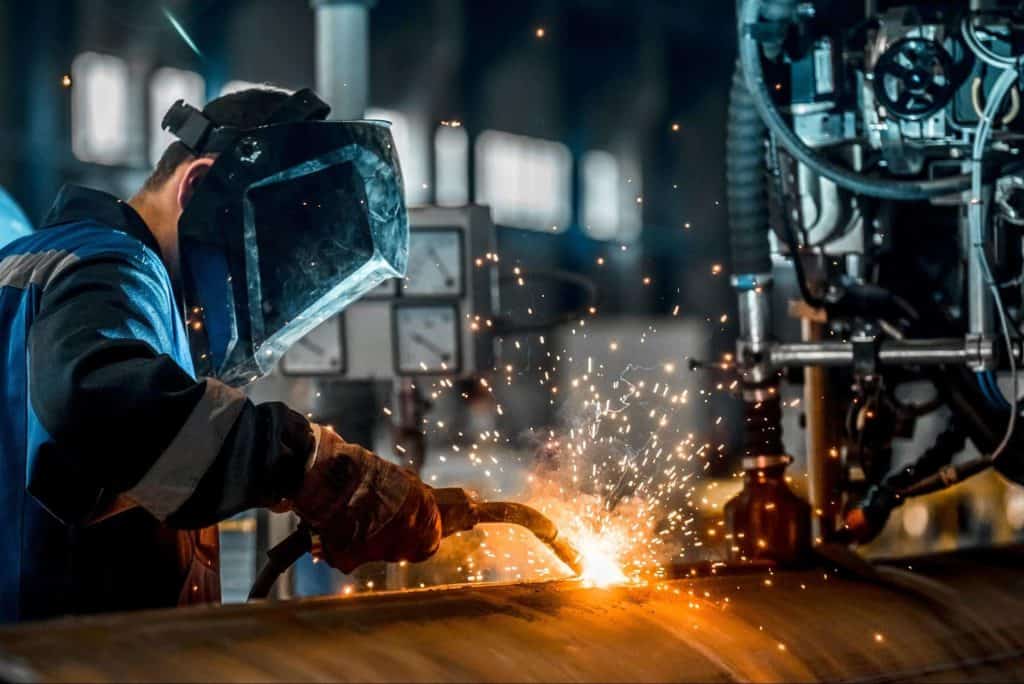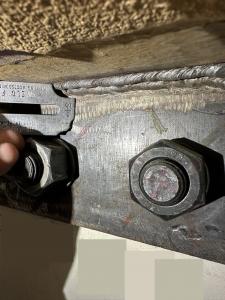Why Select Expert Welding Inspection Gilbert Arizona for Your Jobs?
Why Select Expert Welding Inspection Gilbert Arizona for Your Jobs?
Blog Article
Checking Out the Value of Welding Evaluation in Industrial Applications: Guarding Against Failures and Enhancing Longevity
Welding evaluation offers as a crucial line of defense in commercial applications, making certain the architectural stability and dependability of welded components. By methodically determining problems such as porosity and insufficient combination, examinations not only prevent failings yet additionally extend the lifespan of necessary properties.
Function of Welding Examination
Welding evaluation works as a crucial safeguard in commercial applications, ensuring that bonded structures meet defined standards of top quality and safety. This process entails a methodical exam of welds to validate their honesty, strength, and conformity with well-known codes and specifications. The function of welding inspection is complex, encompassing both visual evaluations and non-destructive testing approaches, which might include ultrasonic, radiographic, or magnetic bit testing.
Reliable welding evaluation recognizes possible concerns early, reducing the danger of catastrophic failures that can arise from poor welds. By making certain that welds are implemented according to design specs, inspectors contribute to the total architectural reliability and durability of parts in critical applications, such as pressure vessels, pipes, and architectural frameworks.

Common Welding Issues

Among one of the most common problems is porosity, characterized by small gas pockets caught within the weld steel. This takes place because of impurities or incorrect shielding gas, endangering the weld's toughness. An additional considerable defect is insufficient fusion, where the weld metal stops working to bond appropriately with the base product, possibly leading to structural weak points.

Splits can likewise establish throughout or after the welding process, commonly credited to thermal tensions or incorrect air conditioning rates. In addition, damaging, where the base metal is deteriorated along the weld bead, can compromise the joint and is usually triggered by extreme warmth input or incorrect method.
Additionally, absence of penetration occurs when the weld steel does not get to the root of the joint, leading to poor strength. Comprehending these typical defects is important for inspectors and welders alike to make certain that welded structures meet safety and security and efficiency criteria, ultimately avoiding potential failings in industrial applications.
Benefits of Routine Inspections
Normal examinations work as a vital safeguard in making certain the integrity and long life of bonded structures. These assessments determine possible flaws and weaknesses that might compromise the integrity of welds, permitting timely removal before problems rise. By implementing a structured inspection routine, companies can significantly reduce the danger of disastrous failings that might bring about costly downtime, equipment replacement, and even mishaps.
Additionally, normal examinations add to enhanced quality control throughout the welding process. By adhering to a consistent evaluation Learn More Here schedule, companies can guarantee that their welding methods satisfy recognized high quality criteria and finest methods. This not only fosters a culture of accountability yet also encourages continuous renovation amongst welding workers.
Additionally, routine evaluations help with better maintenance preparation. By recognizing deterioration early, organizations can strategically set up fixings and substitutes, minimizing disturbance to operations. This proactive strategy inevitably results in extended property life expectancy and improved total efficiency.
Last but not least, a dedication to regular assessments can improve a company's track record in the industry. Clients and stakeholders progressively value companies that prioritize safety and quality, therefore enhancing depend on and possibly causing raised service possibilities.
Market Requirements and Regulations
Abiding by sector standards and policies is a basic element of welding examination that complements the benefits of normal evaluations. These standards, established by companies such as the American Welding Culture (AWS) and the American Society of Mechanical Designers (ASME), provide a framework for ideal practices in welding processes, materials, and assessment strategies. Conformity with these regulations makes sure that welds fulfill the called for top quality and safety benchmarks, dramatically reducing the risk of structural failures.
Regulative bodies like the Occupational Security and Wellness Management (OSHA) better apply guidelines that protect workers and the environment during welding operations. By following these established standards, industries can boost the integrity of their parts and frameworks, guaranteeing they do as meant under different operational conditions.
Moreover, adherence to sector criteria cultivates uniformity in high quality control, assisting in smoother interaction among stakeholders and regulatory agencies. This placement not only minimizes liability threats however likewise enhances the trustworthiness of organizations in open markets. Welding Inspection Gilbert Arizona. Inevitably, compliance with welding criteria and guidelines is not simply a legal commitment; it is a crucial investment in safety, efficiency, and long-lasting functional success
Future Trends in Welding Assessment
As Continue industries remain to progress, the future of welding evaluation is positioned to integrate innovative innovations that enhance accuracy and performance. One of one of the most considerable trends is the fostering of automation and robotics in inspection procedures. Automated systems can conduct examinations rapidly, lowering human mistake and increasing throughput in manufacturing atmospheres.
Additionally, the integration of artificial knowledge (AI) and artificial intelligence algorithms will certainly enable anticipating analytics, permitting real-time evaluations and proactive upkeep. By analyzing information from previous inspections, these innovations can recognize patterns that could suggest possible failings, consequently prolonging the life-span of welded elements.
In addition, non-destructive screening (NDT) techniques are expected to come to be more innovative, utilizing tools such as drones and independent lorries geared up with innovative sensing units. Welding Inspection Gilbert Arizona. These developments will improve the ability to examine hard-to-reach or unsafe areas without compromising security
Moreover, the pattern in the direction of digitalization will certainly result in boosted information monitoring systems that promote far better monitoring, reporting, and conformity with sector criteria. In recap, the future of welding inspection is characterized by technical improvements that promise to substantially enhance dependability, security, and operational effectiveness in numerous commercial applications.
Final Thought
In final thought, welding inspection serves an essential function in making certain the stability and resilience of bonded structures throughout various commercial applications. As innovations in modern technology continue to progress, the future of welding assessment promises boosted precision and effectiveness, ultimately contributing to the long life of important infrastructures.
Welding examination serves as a critical line of defense in commercial applications, guaranteeing the architectural honesty and reliability of bonded parts.Welding evaluation offers as a critical protect in commercial applications, making certain that welded structures satisfy specified requirements of high quality and security. Ultimately, the duty of welding assessment is crucial in advertising safety and security, enhancing performance, and shielding investments in industrial infrastructure.
These requirements, developed by companies such as the American Welding Society (AWS) and the American Society of Mechanical Engineers (ASME), offer a framework for finest methods in welding procedures, products, and examination techniques.In conclusion, welding inspection serves an important function in guaranteeing the stability and click here for info longevity of bonded frameworks throughout numerous commercial applications.
Report this page